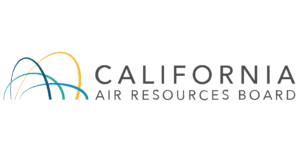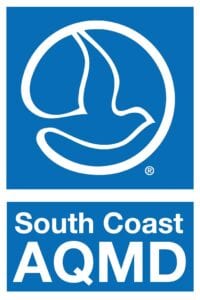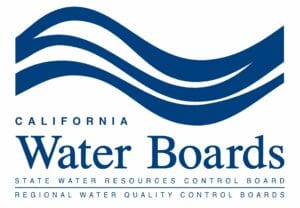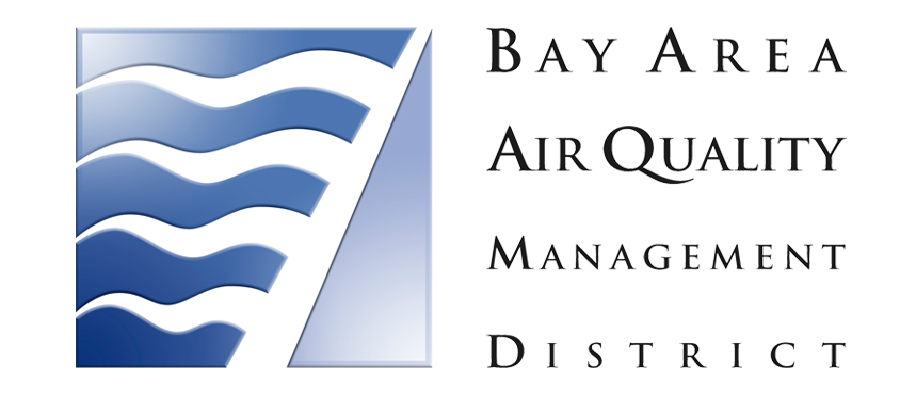Insights
Table of Contents
ab 617
In 2017, California passed legislation (AB 617) embracing a new community-focused strategy to reduce air pollution and improve public health throughout the state. Specifically, AB 617 requires development of a uniform statewide emissions reporting system and establishment of new community monitoring and emission reduction programs. The California Air Resources Board (CARB) has delegated much of the responsibility to implement these requirements to the local air districts. AB 617 emphasizes the need for greater public accessibility and transparency of all emissions data.
Complete and accurate reporting of criteria pollutant and toxic air contaminant emissions for stationary sources is vital to the success of all AB 617 programs. Although emissions reporting has existed for many years at the air district level, AB 617 was conceived in part to improve the process at the state level using better software and more consistent estimation methodologies. This data will in turn support the new community monitoring and emission reduction programs.
AB 617 implementation has already begun. In 2018, CARB selected an initial group of sensitive communities for air monitoring and adopted a new emissions reporting regulation. In 2019, certain air districts are targeting to deploy the first community air monitoring systems (and oversee new facility fence-line monitors), and facilities will begin reporting AB 617 emissions data. Concurrently, a statewide strategy is underway to reduce emissions in these sensitive communities. Air districts with one or more selected communities have arranged for community participation, and are pursuing new and amended rules to achieve specific emission reductions by applying Best Available Retrofit Control Technology (BARCT). These efforts will result in adoption of community emission reduction programs.
Davenport Engineering, Inc. is tracking AB 617 developments very closely and has been vocal with stakeholders regarding various aspects of its implementation. Many of our existing clients operate facilities subject to AB 617, and so the nature of our year-round work has already started to change. Emission inventories are now prepared with new requirements in mind – delineation of AB 617 sources and pollutants, more transparency of methods and data sources, ease of data transmission, and identification of potential emission reductions. We also have the capability to conduct predictive modeling of estimated emissions for the purpose of comparing results to community and fence-line monitoring data.
If your facility is or may be subject to AB 617, we can help confirm any specific applicabilities. Success starts with preparedness. We can review your current emissions inventory program and help you prepare for future method and reporting changes. We can also help you prepare to meet new anticipated BARCT requirements.
To learn more, please contact us today.
Health Risk
Assessments
In 2015, California updated its OEHHA risk assessment guidelines and HARP modeling software. The changes were substantial and have had a significant impact on facilities subject to AB 2588, air permitting, and other health risk modeling requirements.
These relatively new modeling standards place greater emphasis on infant and child exposure and are expected to increase residential cancer risk estimates by a factor of 2 to 6, compared to previous guidelines. California facilities with an AB 2588 health risk assessment (HRA) last approved before 2015 should be aware that present-day risk estimates will likely differ remarkably from the past. Also, as a result of OEHHA guideline changes, air districts are expected over time to identify new facilities subject to AB 2588 HRA requirements. This will trigger more first-time HRAs.
AB 2588 compliance is managed differently throughout California. For example, some air districts perform facility HRAs internally. In other districts, the facilities themselves are responsible for preparing an HRA. In the SCAQMD, facilities have the option to participate in a Voluntary Risk Reduction Program (VRRP), which is intended to reduce the cost and formality of AB 2588 compliance. The VRRP is attractive to facilities that can meet lower risk thresholds, and if necessary, implement risk reduction measures in a shorter period of time.
Davenport Engineering, Inc. is very active in the area of health risk assessment. We have first-hand experience modeling risks, explaining consequences associated with applying the new OEHHA guidelines, and preparing HRAs. Many of our client facilities are complex, so we are accustomed to evaluating many pollutant and emission source details. We can review your emission estimates for accuracy and completeness, pin-point risk modeling sensitivities, and identify potential risk reduction measures. A number of our employees are trained in air dispersion modeling and risk characterization, including senior staff whose experience dates back to the early years of “Hot Spots” modeling in the 1990’s.
If your facility is subject to AB 2588, and you have not modeled health risks in recent years, we can help. In some cases, it may be advantageous to evaluate facility risks before receiving a formal district request to prepare an HRA.
To learn more, visit our page on
Health Risk Assessments
or contact us today.
RECLAIM Sunset
Major changes are underway in the South Coast Air Quality Management District (SCAQMD) with the planned sunset of the Regional Clean Air Incentives Market (RECLAIM). RECLAIM is a cap-and-trade program established in 1993 to reduce NOx and SOx emissions in the South Coast Air Basin.
SCAQMD is in the process of transitioning NOx generating equipment out of RECLAIM and back into what is commonly called command-and-control regulations (the same transition is expected later for SOx). Essentially, SCAQMD is transitioning from a market driven cap-and-trade framework to a rule based framework as the means to reduce NOx emissions.
SCAQMD is busily writing and amending rules that will take over when the RECLAIM program sunsets. Such landing rules will regulate various NOx generating equipment and require Best Available Retrofit Control Technology (BARCT). NOx landing rules that have already been adopted include Rules 1146, 1146.1, and 1146.2 for boilers, steam generators, process heaters, and water heaters.
SCAQMD is also working to resolve several technical issues tied to RECLAIM’s sunset. One of the tougher challenges is crafting a path forward within the New Source Review (NSR) air permitting program, which requires an accounting of air emissions from permitted equipment. SCAQMD is engaging with stakeholders and EPA on this topic as well as several others.
When a facility finally exits RECLAIM, it will no longer have the flexibility to buy NOx RECLAIM Trading Credits (RTC) to comply with facility-level emission caps that decline over time. Instead, it will need to comply with the equipment-level BARCT requirements contained in its NOx landing rules.
The sunset of RECLAIM and associated rise of new rules represents a paradigm shift for industry. With this comes the challenge of developing a compliance strategy for each landing rule, and if necessary, designing, permitting, and testing new NOx control technology. In addition, each landing rule will have new monitoring, reporting, and recordkeeping requirements to implement.
Davenport Engineering, Inc. is actively tracking the RECLAIM sunset developments. If your facility is subject to RECLAIM, we have regulatory specialists and SCAQMD Certified Permitting Professionals (CPPs) available to answer your questions and help manage this transition.
To learn more,
please contact us today.
Emission Inventory
For the first half of every year, Davenport Engineering’s emission reporting season is in full swing. During this time, we are helping our clients calculate and tabulate their emissions of criteria pollutants, toxic air contaminants (TAC), and greenhouse gases (GHG) for a variety of federal, state, and local emission inventory reports. Some of these reports that are due in 2023 for reporting year 2022 include:
- SCAQMD Annual Emissions Report (AER) due on March 17, 2023. In the South Coast Air Quality Management District (SCAQMD), facilities subject to the AER report are required to submit an annual emissions inventory of criteria pollutants and certain toxic air contaminants (TACs). Fees are assessed on the amount of each pollutant emitted.
- EPA GHG emissions report due on March 31, 2023. The EPA Mandatory Reporting Regulation (MRR) requires subject facilities to submit an annual emissions inventory of greenhouse gas (GHG) emissions. For common combustion sources, the GHG pollutants of concern are carbon dioxide (CO2), methane (CH4), and nitrous oxide (N2O).
- California AB 32 GHG emissions report due on April 10, 2023. The AB 32 Mandatory Reporting Regulation (MRR) report is California’s version of the EPA emissions inventory of GHG pollutants. It is submitted to the California Air Resources Board (CARB) and includes unique and additional reporting elements, partly to support California’s AB 32 GHG Cap-and-Trade program.
- BAAQMD Regulation 12-15 annual emissions inventory (EI) report due April 15, 2023 (new due date effective 12/4/19). Petroleum refineries and their support facilities located in the Bay Area Air Quality Management District (BAAQMD) are subject to this report, which requires an annual emissions inventory of criteria pollutants, certain toxic air contaminants (TACs), and GHG pollutants.
- SARA 313 Toxic Release Inventory (TRI) Report due on July 1, 2023. The TRI report is an annual inventory of toxic chemical releases and offsite waste transfers submitted to EPA. EPA makes the reported information available to the public for community-right-to-know purposes.
Davenport Engineering specializes in emissions inventory work. We understand the importance of thorough, accurate, and well-documented emission inventory reports. These reports tie in to your emission fees, emissions trading, and community-right-know programs and ultimately impact your bottom line and community reputation.
If your facility subject to one or more emission inventory reports, or if you are unsure, contact us today to learn more and discuss your needs.
“Davenport hires quality people. When I go to most companies, it’s a generic person, but at Davenport, I get smart people who learn quickly. The whole company is very organized.”
Davenport Client in the Oil and Gas Industry
Useful Links

Environmental Protection Agency (EPA)
Laws and Regulations – http://www.epa.gov/lawsregs
Emission Factors – https://www.epa.gov/air-emissions-factors-and-quantification/ap-42-compilation-air-emission-factors
Toxics Release Inventory (TRI) Program – http://www.epa.gov/tri/
e-GGRT (Electronic GHG Reporting Tool) – https://ghgreporting.epa.gov/ghg/login.do
California EPA – https://www.calepa.ca.gov

California Air Resources Board (CARB)
Laws and Regulations – http://www.arb.ca.gov/html/lawsregs.htm
AB 2588 Air Toxics Hot Spots Program – http://www.arb.ca.gov/ab2588/ab2588.htm
Greenhouse Gas Mandatory Reporting – http://www.arb.ca.gov/cc/ccei.htm
CARB GHG Reporting Tool – https://www.arb.ca.gov/cc/reporting/ghg-rep/tool/ghg-tool.htm

South Coast Air Quality Management District (SCAQMD)
Rules and Regulations – http://www.aqmd.gov/home/regulations/rules
Compliance Programs – http://www.aqmd.gov/home/regulations/compliance”http://www.aqmd.gov/home/regulations/compliance
RECLAIM – http://www.aqmd.gov/home/programs/business/business-detail?title=reclaim
Permitting – http://www.aqmd.gov/home/permits#Permitting%20Process

California State Water Resources Control Board
Industrial Storm Water – http://www.swrcb.ca.gov/water_issues/programs/stormwater/industrial.shtml
Storm Water FAQ – http://www.waterboards.ca.gov/water_issues/programs/stormwater/indusfaq.shtml
Industrial Waste Water – http://www.swrcb.ca.gov/water_issues/programs/npdes/

Bay Area Air Quality Management District (BAAQMD)
Rules and Regulations – http://www.baaqmd.gov/rules-and-compliance
Permits and Registration Program – http://www.baaqmd.gov/permits
Air Toxics Programs – http://www.baaqmd.gov/research-and-data/air-toxics
